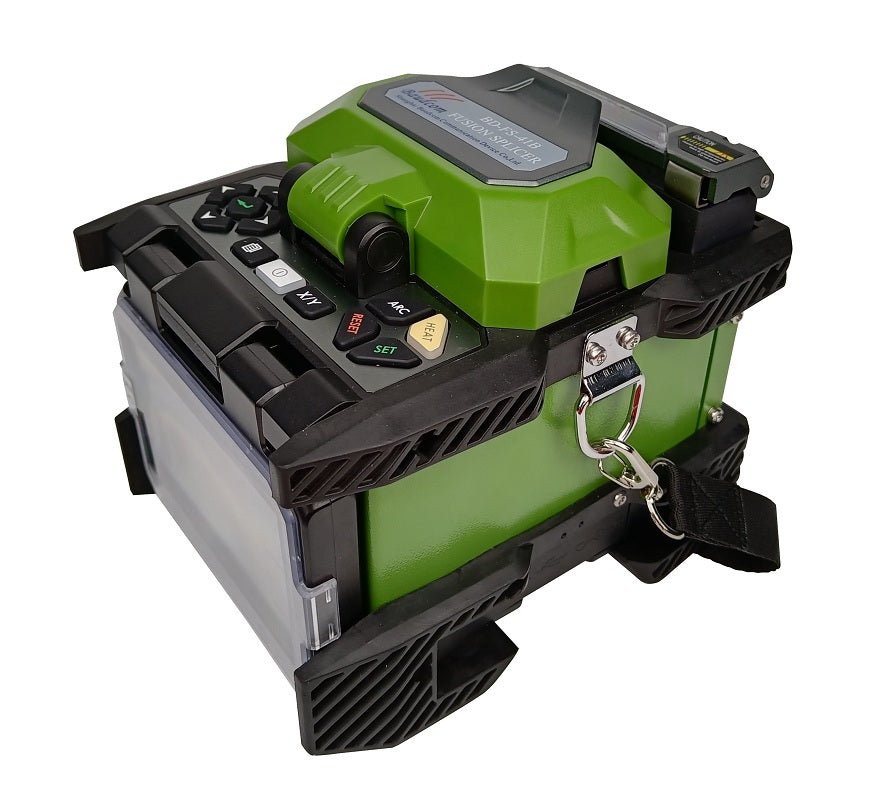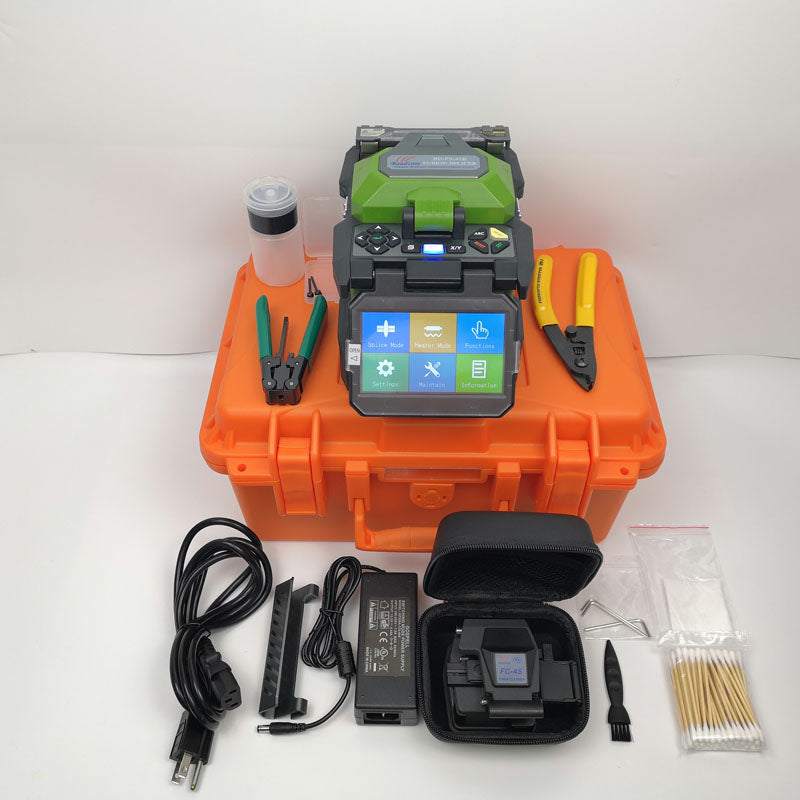If you’ve ever wondered how internet signals travel so quickly or how cable TV works without interruptions, fiber optics play a huge role. Fiber optic cables are used to send data as light pulses over long distances, and for these cables to work properly, they need to be connected seamlessly. That’s where a fibre optic fusion splicing machine comes in.
What is Fusion Splicing?
Fusion splicing is the process of joining two optical fibers together by melting the ends and fusing them into one continuous piece. This technique ensures that the light signal travels with minimal loss, which is important for fast, reliable communication. It's like connecting two strands of spaghetti together to create one long piece, except you're using light and high-tech equipment!

What does a fiber optic splicer do?
Here’s a simple breakdown of the fiber optic fusion splicing process:
Preparing the Fibers: The technician strips the protective coating off the fibers and carefully cuts the ends so they’re smooth and even.

Aligning the Fibers: The ends of the fibers are aligned perfectly using a special fibre optic fusion splicing machine. This step is critical because even a tiny misalignment can lead to signal loss.
Fusion: The fibers are then heated with an electric arc until the ends melt and fuse together. This creates a solid, almost invisible bond between the fibers.
Protecting the Splice: After the fibers are fused, the splice is often covered with a protective sleeve to keep it safe from environmental damage and prevent any physical stress on the connection.
Why is Fusion Splicing Important?
fiber optic fusion splicing is important because it creates a strong, low-loss connection. The goal is to make sure that the light signal traveling through the fiber doesn’t lose power or quality. This is crucial for high-speed internet, phone lines, cable TV, and any other technology that relies on fiber optic cables.
Where is it Used?
Fiber optic fusion splicing is used by technicians in a variety of industries, including:
· Telecommunications: Connecting phone and internet networks.
· Data Centers: Keeping servers and storage systems connected.
· Cable TV: Ensuring high-quality TV signal transmission.
· Construction and Infrastructure: Installing fiber optics in new buildings or city networks.
Why Choose Fusion Splicing?
Compared to other methods of connecting fibers, like mechanical splicing, fiber optic fusion splicing creates a more reliable and lower-loss connection. It’s faster, stronger, and better suited for long-term use. That’s why it’s the go-to method for professionals in the field.
In short, a fibre optic fusion splicing machine helps make sure that the data and signals we rely on are transmitted quickly and without interruption. It’s an essential job in our modern, connected world!


